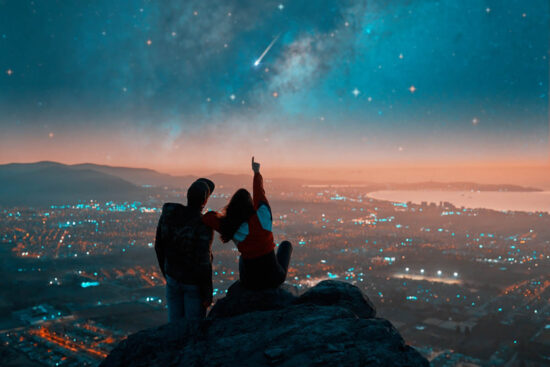Stargazing in spring: Top astronomy events to watch this season
Learn about these spring astronomy events, from meteor showers to planetary dances, and embrace the beauty of the night sky.

Spring brings not only warmer weather and blooming flowers but also a host of celestial events that make it a perfect time for stargazing.
As the nights grow shorter and the skies clearer, this season offers a unique opportunity to observe some of the most fascinating astronomical phenomena.
From meteor showers to planetary alignments, there’s something for everyone to enjoy.
Before you continue reading, we invite you to listen to the new Crímenes de Terror podcast by clicking HERE.
Click on the image to listen to the podcast
 PHOTO MundoNOW
PHOTO MundoNOWOne of the highlights of spring is the chance to see the planets align in the night sky.
This celestial event, known as a planetary alignment, occurs when multiple planets appear to line up from our perspective on Earth
Such alignments are not only beautiful to observe but also offer a great opportunity to learn more about our solar system’s dynamics.
With just a pair of binoculars or even the naked eye, you can enjoy this spectacular display on clear spring nights.
Catch the Lyrid meteor shower

The Lyrid meteor shower, an annual event every April, is one of the oldest known meteor showers, with records dating back over 2,600 years.
As Earth passes through the debris left by Comet Thatcher, the sky lights up with shooting stars, creating a breathtaking spectacle.
The best time to watch the Lyrids is in the pre-dawn hours, especially when the moon is not too bright, providing a dark backdrop for the meteors.
This shower can produce about 20 meteors per hour, making it a not-to-miss event for anyone interested in the night sky.
Marvel at the supermoon

A supermoon is a full moon that appears larger and brighter in the sky because it’s at its closest point to Earth in its orbit.
This spring, be on the lookout for a supermoon, which will not only illuminate the night sky but also offer a perfect subject for astronomy photography enthusiasts.
Observing a supermoon is a simple yet profound experience that highlights the beauty of our natural world.
It’s a reminder of the wonders of the universe and our place within it.
Spring astronomy events: Explore the constellations

Spring skies offer a canvas for a variety of constellations that tell stories from ancient myths and legends.
As the season progresses, look out for Leo, with its distinctive lion shape, and Virgo, one of the largest constellations in the sky.
Each constellation has its own set of stars and deep-sky objects, like galaxies and nebulae, waiting to be explored.
Stargazing apps or a star map can enhance this experience, helping you to identify and learn more about each constellation’s history and significance.
Experience the Eta Aquarids meteor shower

The Eta Aquarids, peaking in early May, are another spectacular meteor shower best viewed in the pre-dawn hours.
Originating from Halley’s Comet, this shower can produce up to 40 meteors per hour under ideal conditions.
Observers in the Southern Hemisphere get the best view, but those in the Northern Hemisphere can still catch a good show.
This event is a testament to the beauty and predictability of celestial phenomena, as Halley’s Comet leaves a trail that Earth crosses annually.
Spring astronomy events: The conjunction of Venus and Jupiter

A conjunction occurs when two planets appear very close to each other in the sky, and this spring, Venus and Jupiter will put on a show.
This pairing is especially notable because Venus and Jupiter are two of the brightest objects in the night sky, making their conjunction a dazzling sight.
Such events are a perfect opportunity to observe the differences in color, brightness, and apparent size between planets.
A clear western horizon just after sunset will offer the best view of this stunning alignment.
 Related post
Related post





